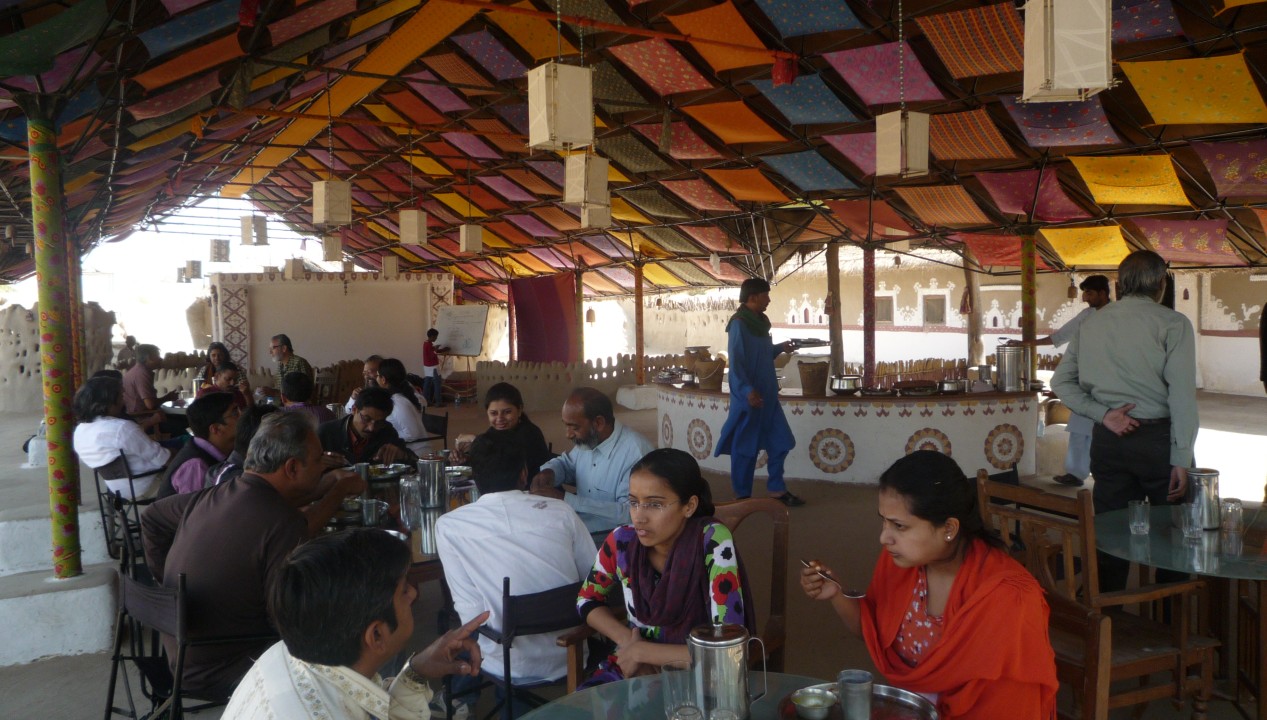Tell us about some important projects that your studio was involved in just before the lockdown.
The studio was working on a few larger commissions with which the entire team was engaged. These included a sports park in Bhutan and a collaborative project with another practice for a Leadership Institute in Chennai.
Which were the biggest challenges and fears you faced because of the lockdown?
The greatest challenge was the inability to brainstorm in real-time, given the small size of our team. We are used to a close-knit work environment and this became a challenge during the period of remote work.
What were the challenges you faced with the monetary flow in your practice and how are you handling them?
We have, as a practice, been quite conservative in our team size and the work we take on. We have not focused on just growth, and so we were able to navigate through the challenges thrown up by the pandemic. Staying away from the studio and the work ethic built around it did cause some disruption and necessitated adopting new ways to communicate with clients and the site, and amongst the team too.
How are you strategizing to adapt to the new conditions of work upon resumption of office post the lockdowns?
We are transitioning back into the studio routine with the situation improving. But, some of the positives such as the possibility of doing online meetings with sites and clients has helped us use our time better. It has also shown us the potential to collaborate with other creatives and organizations across geographies. This is something we are looking to actively explore in the future.
Were any new methods of work evolved during the lockdown?
There were positives in the way the studio interacted with clients, but we have greatly enjoyed being back together as a team at our workspace.
How were the coordination issues resolved with the studio staff and on-site team?
With some trial and error, coordination challenges have helped us refine the way we document our work, and gave us time to revisit the processes we had been using at the studio.
What were the biggest learnings from the pandemic? And which decisions and new work methods you feel your studio will continue with for the future?
The entire period has helped us reassess our priorities as individuals and as an organization. It amplified both our weaknesses and strengths. We are enjoying spending increasing amounts of time at both the studio and our sites.
The greatest takeaway from the lockdown was the wealth of knowledge available with the adoption of technology. It has certainly accelerated the adoption of a more collaborative approach to the way we practice.
About your practice:
Please let us know about the founding year, principals, team and studio.
A Design Co. (ADC) is an award-winning Chennai based design studio. It was founded in 2014 by Gowri Adappa and Nikhith Ashok after a successful collaboration. The studio provides design consultancy services in the domains of architecture and interiors. The portfolio of work handled has expanded progressively from residential to a wider spectrum of typologies including environments for work, study, rest and recreation. The studio is comfortable engaging across typologies and scales. It continually takes forward the learnings acquired from small projects to maintain the quality of work as the size increases. The practice strives to find small innovations which catalyse a larger positive outcome in use.
What are some of the processes and work methods unique to your practice?
We are constantly talking to peers to learn from other people’s experiences. Our team is also an integral part of establishing the studio culture we have grown accustomed to. We certainly see ourselves as a W.I.P.







